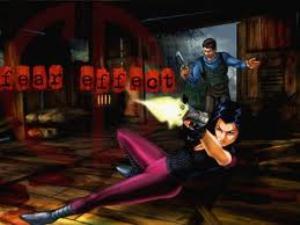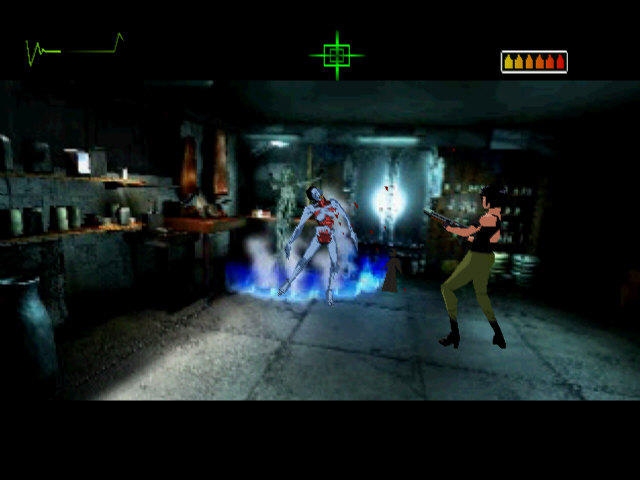A Look Back on Fear Effect and Fear Effect 2: Retro Helix
 Some games are created ahead of their time, unfairly restricted by the technology, attitudes and conventions of their generation so that they struggle to achieve their potential and, by extension, their deserved success. They fall short of greatness not because of a drought of ideas or a lack of willingness in their creators to turn ideas into action, but because they are hamstrung by tech that simply isn’t ready for them yet. 1999’s pioneering action horror Fear Effect, and its prequel Retro Helix (released two years later), are examples of such titles.
Some games are created ahead of their time, unfairly restricted by the technology, attitudes and conventions of their generation so that they struggle to achieve their potential and, by extension, their deserved success. They fall short of greatness not because of a drought of ideas or a lack of willingness in their creators to turn ideas into action, but because they are hamstrung by tech that simply isn’t ready for them yet. 1999’s pioneering action horror Fear Effect, and its prequel Retro Helix (released two years later), are examples of such titles.
The original was one of the first games to use cel-shading on 3D polygons, giving the visuals a beautiful and unique animé style. While at the time the limitations of technology meant concessions had to be made regarding dynamic lighting and 3D shading, its uniqueness carried it through. Developers Kronos Digital Entertainment took quite a gamble with certain other design decisions, most notably in using looping full motion video sequences for the backdrops instead of pre-rendered wallpapers, as was the norm. The result was a world that looked more alive than we were used to seeing, capturing the bits of our imagination we didn’t know we weren’t using with all kinds of subtle little touches like moving shadows and distant traffic to create a level of immersion we weren’t expecting.

By today’s standards it’s nothing to get excited about, but 13 years ago it was an impressive feat, not to mention a choice that meant Fear Effect had to be shipped on a whopping four discs. However, it’s worth mentioning for the sake of balance that despite what many consider to be significant leaps in visual tech, Fear Effect still suffers from woeful voice-syncing and an unpleasant grainy overlay caused by compressing all that data. That being said, while most people who discuss Fear Effect will certainly reference the graphics, the main draw was always the storytelling.
Cast somewhere between Big Trouble in Little China and The Losers, Fear Effect is highly atmospheric, sometimes surprisingly brutal action horror. It follows the (mis)fortunes of three mercenaries, Hana Tsu-Vachel, Royce Glas and Jakob “Deke” DeCourt, all attempting to escape their pasts, all hiding secrets from one another, all borderline amoral. Hired to descend into the belly of the Hong Kong underworld to rescue Wei Ming, the daughter of a Triad boss, they find themselves dragged into the middle of a Chinese horror story: Hell is full, and an ancient demon lord plans to sacrifice Wei Ming to merge it with Earth. Cue dimension-hopping, demon-slaying, severed limbs and, frankly, one of the most cinematic games of its generation. It’s really a testament to the overlying atmosphere that the supernatural elements fit so neatly alongside the near-future setting and the whole thing somehow manages to come off as believable, inviting you to suspend your scepticism and do so willingly.

Progression towards the multiple good/bad endings is a mix of exploration, combat and puzzle solving. The Resident Evil-style “tank controls” (UP is always forward, etc) that were oddly popular in the 90’s are off-putting nowadays, and they certainly don’t make the gunplay easy. There’s no way to target enemies beyond pointing roughly in their direction and waiting for a little targeting reticule to appear outside of the main screen. Evasive rolling allows you to dodge enemy fire, but switching between equipment on the fly is borderline infuriating thanks to one of the most counter-intuitive item select systems ever, wasting two whole face buttons on scrolling backwards and forwards through your gear. More interestingly, the title Fear Effect refers to the health system which, for reasons that only make sense within the framework of Kronos’ gameworld, is tied to your character’s mental state. Taking hits or struggling with a puzzle will increase your heart-rate, while stocking up on ammo or stealth-killing goons will settle your ticker and restore you to a healthy state; get too scared and the fear effect will kill you. It works in context with the game’s universe, and in fact it’s Fear Effect’s faithfulness to its own rules that set it apart from contemporaries like Resident Evil and Parasite Eve.
However, even a great premise and edgy gameplay are nothing without watchable characters, and Fear Effect’s lineup of likeably-unlikeable mercs proved hugely – and enduringly – popular. Glas is surly, obtuse and ragged around the edges, but hides a nobility that sometimes struggles to find the light; Deke is a money-hungry brute whose charming façade and dry Australian wit mask a cold, calculating murderer; and Hana is an amalgam of video game heroines, strong, courageous, maternal, independent. Unarguably over-sexualised at times, her attitude and sexuality nevertheless suit the character of an ex-prostitute who got off the game and found she was better at busting heads than…Well, you know. The characters fit like the mythology fits, the impressive voice acting making their chemistry believable and the multinational set-up (Glas is American, Hana part British-Chinese and part French and Deke is from New South Wales) ensuring that they’re in some way identifiable to a high percentage of potential consumers all at once. The unique style and setting may be essential, but it’s the characters that really make Fear Effect tick.

The prequel, Retro Helix, expanded on the original in every way, staying with the supernatural horror while retaining the gruesome death animations and character interplay, but telling the story of how the three leads met while introducing a fourth protagonist in the form of technical wizard Rain Quin, Hana’s best friend and some-time lesbian lover. The storyline involves a virus that attacks the body at a genetic level and is killing hundreds, if not thousands, of people; though it’s soon revealed to be much more than a simple infection. Throwing zombies into the mix might seem like an obvious nod to a certain other action-horror series pulling in massive praise around the same time, but Fear Effect 2: Retro Helix went its own way, sticking with the combination of action movie swagger, larger-than-life characters and preternatural creepiness that made the first game a success.
Without going into too much detail, the plot eventually comes to encompass Rain’s evil twin and a good deal of double-crossing, but manages to remain just slightly lighter in tone than the original. Although the gameplay is tightened rather than overhauled in any specific area, there is a little more confidence in the storytelling, an improvement that boded well for the planned true sequel Inferno, which was unfortunately dropped by Eidos in 2002 for reasons never fully divulged. Perhaps the saddest thing is that rather than remembering the excellent game that Retro Helix is, most people only recall the controversy that arose over the advertising campaign. It’s made clear in the game that Hana and Rain have an at least occasionally-sexual relationship, but posters depicting them lolling around in their underwear (as above) had nothing to do with the game whatsoever and were little more than pure provocation. They angered a number of people, perhaps rightly, and left a stain on Kronos Digital’s reputation.

Regardless, the appeal of Fear Effect and Fear Effect 2: Retro Helix was, and still is, the vibrant world conjured by Kronos and the seamless mix of near-future sci-fi and ancient Eastern mythology. As classics over a decade old, the Fear Effect games are showing their age in more ways than one, but if ever a series was truly calling out for an update or a remake, this one is. The same visual techniques refined with modern technology would be a stunning backdrop to the kind of creeping atmospheric horror we expect from franchises like, say, Condemned or Dead Space, combined with the blockbuster set-pieces that have come to define the action genre this generation. That would be pretty wow.
However, before I stray too far into wishlist territory I’ll sign off with a simple request: if you own a PS3 or a Vita and you’ve never played Fear Effect or Retro Helix, do yourself a favour and give them a shot. You can download either for less than 2 quid from the PlayStation Store, and they really should be on the must-play list of any discerning action-horror fan. Really, trust me: they’re that good.




